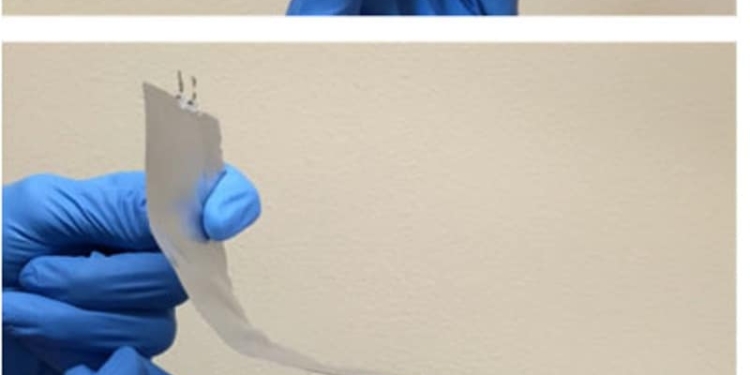source: Energy Harvesting Journal news
Clemson University researchers controllably add nitrogen atoms to graphene to achieve higher energy efficiency of carbon supercapacitors
Making clean energy a large-scale reality entails the integration of renewable energy generation technologies such as solar cells with energy storage devices. This integration is necessary to mitigate the inherent fluctuations associated with photovoltaics. The output power from solar panels, installed on thousands of rooftops or aligned in a solar power plant, depends on the weather – sunny days will generate excess power while output may be significantly lower on cloudy days.
Energy storage devices such as batteries and supercapacitors can be used as a buffer and smooth out the fluctuations by going online at an appropriate time when the solar panels are producing low power. Although some porous carbon supercapacitors are presently being used, they are not yet ready for large scale integration due to a fundamental challenge: the microscopic distribution of electrons in nanocarbons.
Traditionally, the size of electrode materials in supercapacitors is reduced to nanometers to enable high surface area and more room for storing more amounts of energy. But the microscopic electron distribution in nanocarbons limits the total amount of stored energy through a property called ‘quantum capacitance’. Although a lot of charge could be stored in the pores on nanocarbons due to their high surface area, their inherently low quantum capacitance reduces the net energy that could be drawn from supercapacitors. Contrary to the notion that ‘perfection equals best performance’, Clemson University researchers controllably added nitrogen atoms to graphene to achieve carbon supercapacitors ready for practical applications.
“Defects are often seen as performance limiters. But defects provide new possibilities to overcome otherwise insurmountable barriers,” says Dr. Ramakrishna Podila, Assistant Professor of Physics at Clemson who instigated the study. “All defects are not the same. The micro-environment of defect is critical to tune the properties. In other words, we need to find the perfect imperfection to achieve new properties.”
By doping graphene layers with nitrogen atoms, the team has produced graphene with three different flavors: graphitic, pyridinic, and pyrrolic. The latter two flavors (pyridinic and pyrrolic) add nitrogen atoms in the right configuration to change the microscopic distribution of electrons and thereby increase the quantum capacitance of graphene. Furthermore, they allow the electrolyte ions to access the otherwise closed gallery spaces between the layers in few-layer graphene.
“People often quote Feynman’s famous sentence ‘There is plenty of room at the bottom’; but here, we found plenty of room in the middle between the layers to store more energy,” says Podilla. “We have been engineering defects in nanocarbons to go beyond what the traditional materials can offer. We found that the problems of quantum capacitance can be alleviated when nitrogen atoms are inserted into the graphene lattice at precisely the right positions. Indeed, we are able to extract as much energy as a Li-ion thin-film battery but with two orders of magnitude higher power.”
We are excited with the new developments. We wish to now test doped graphene cells for energy harvesting applications,” hopes Jingyi Zhu, a PhD candidate from Clemson Nanomaterials Center and a co-author on this Advanced Materials paper.
Source and top image: Clemson University
































